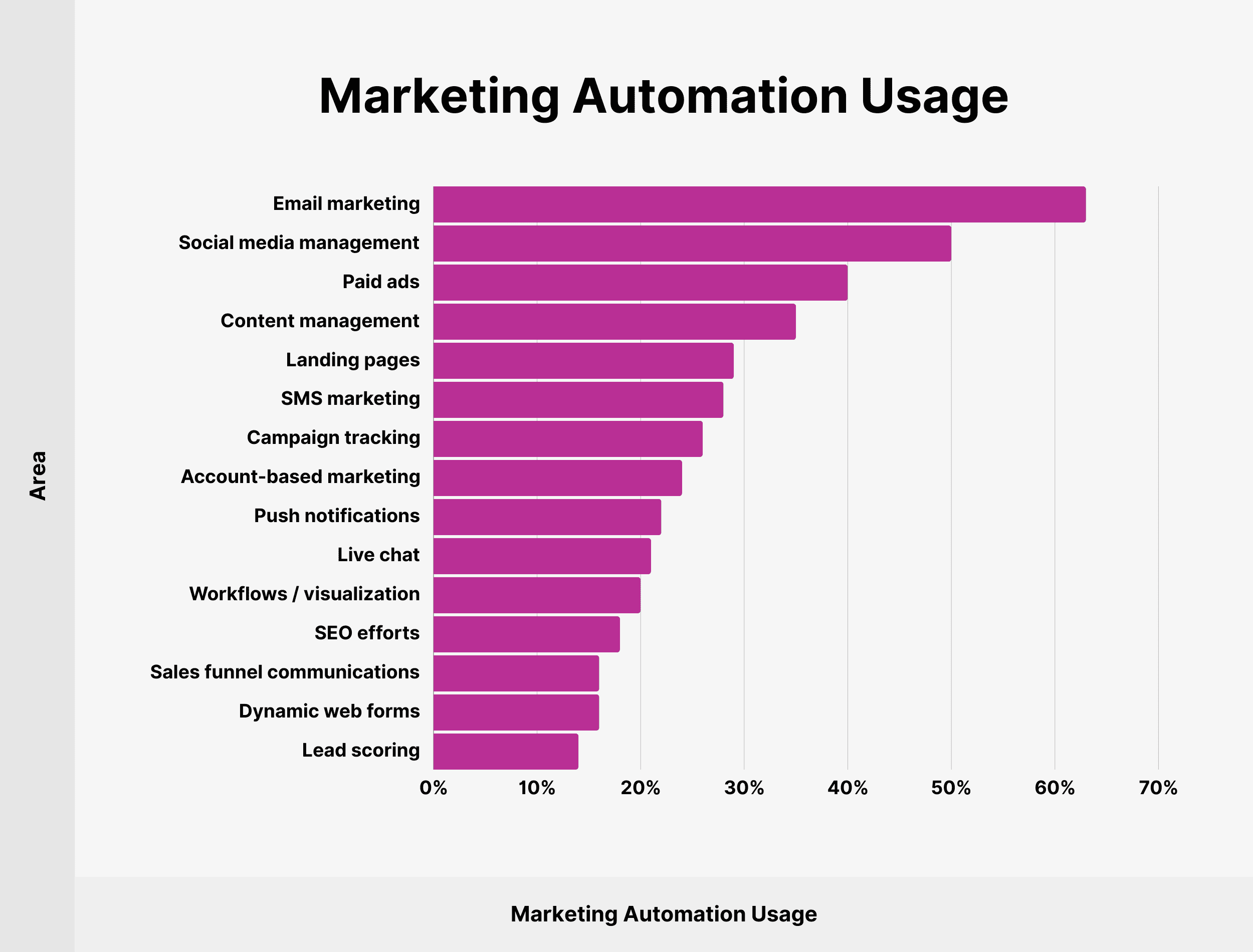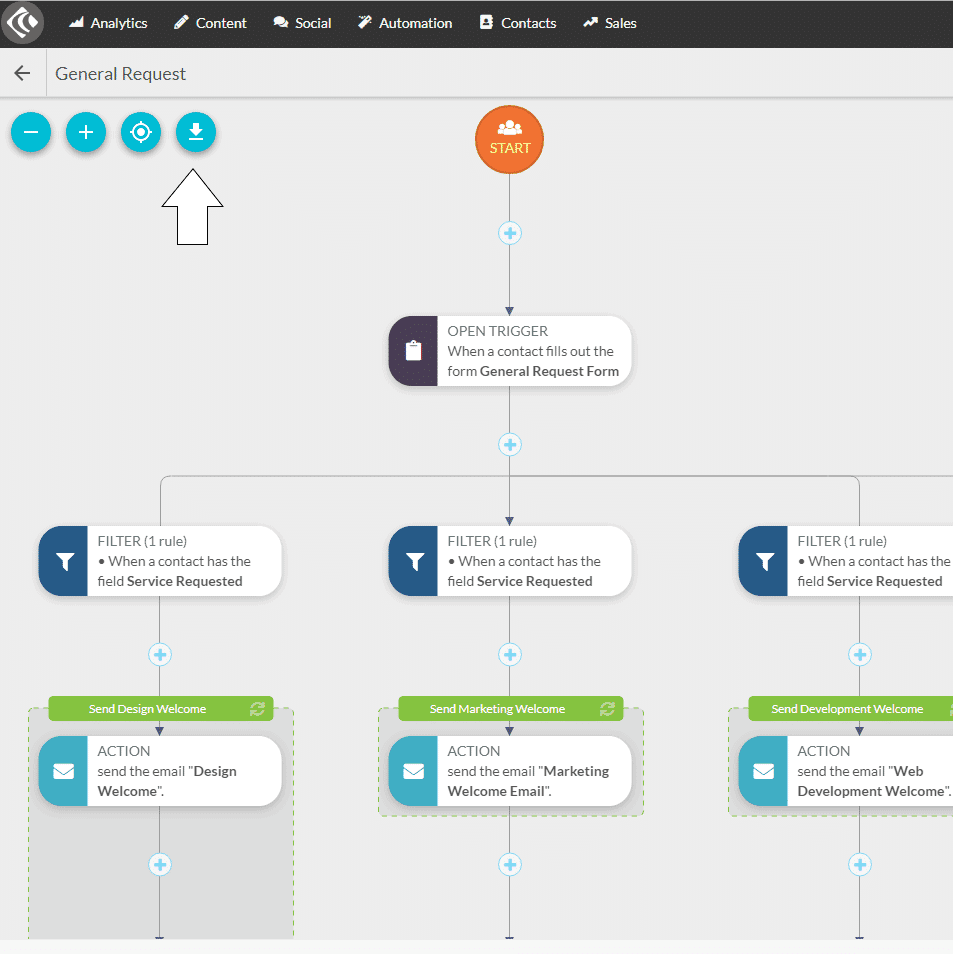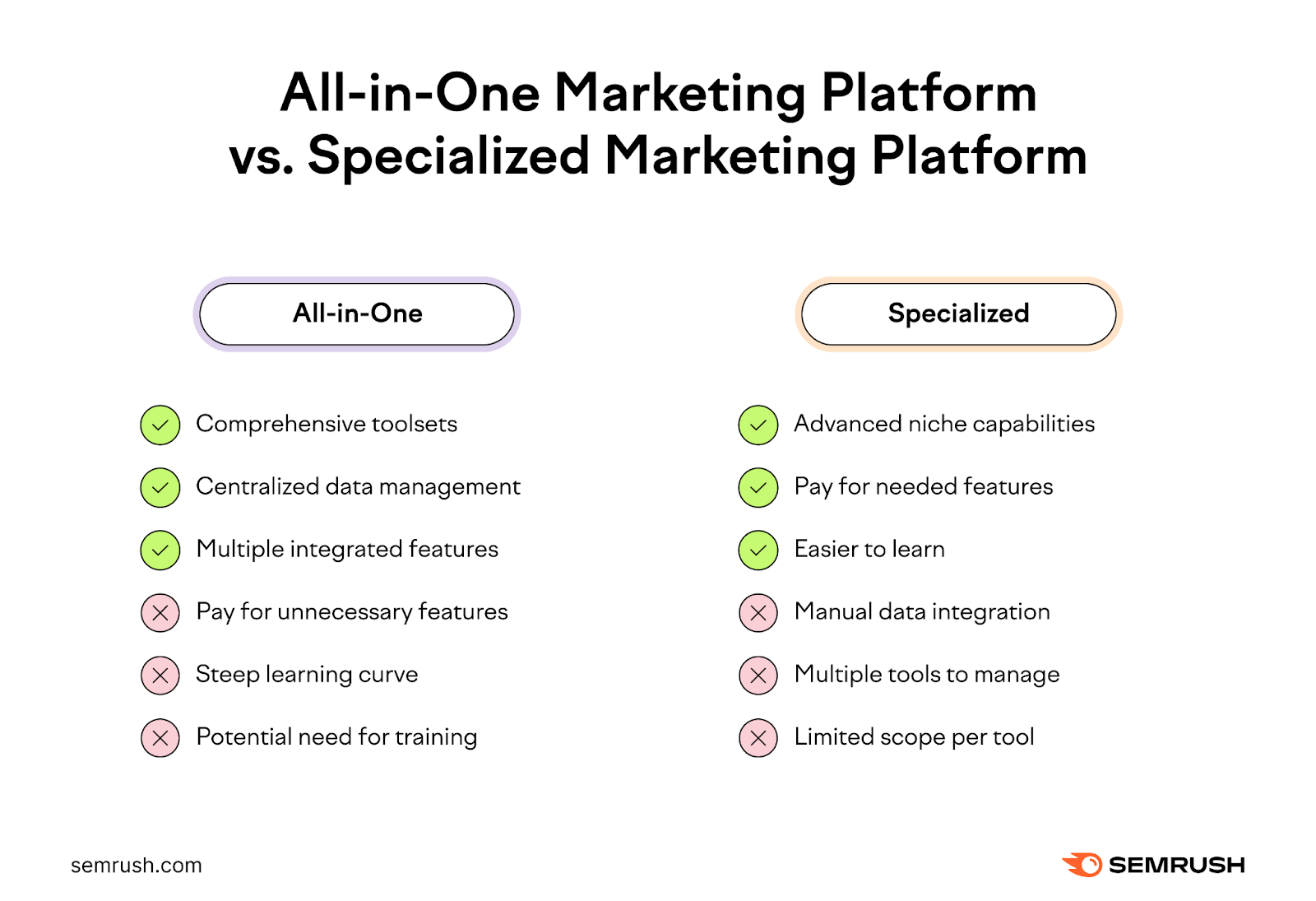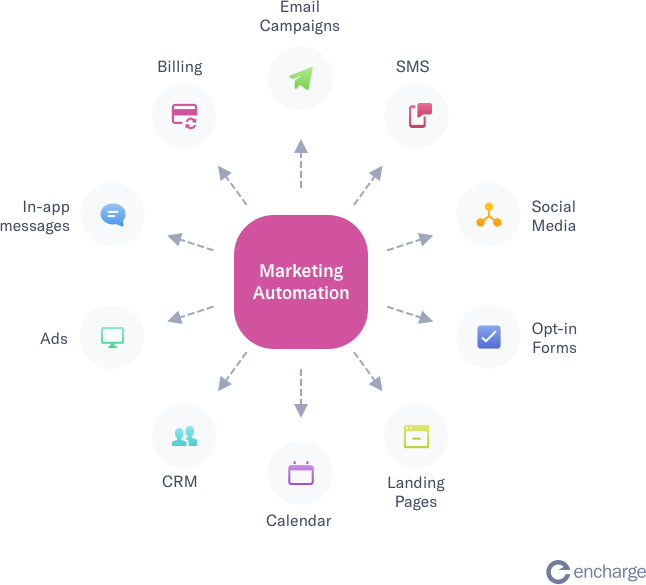In today’s fast-paced digital landscape, businesses constantly seek effective ways to streamline their marketing efforts. A critical aspect of this is understanding the nuances between Free Marketing Automation Tools vs Paid Solutions. With myriad options available, it can be a daunting task to determine which tool best aligns with your business needs, budget, and growth potential. This article delves into an in-depth comparison of free and paid marketing automation tools, analyzing their features, scalability, costs, ease of use, integration capabilities, data security, customer support, and much more.
Free Marketing Automation Tools vs. Paid Solutions: A Comprehensive Comparison

When considering marketing automation tools, one of the first decisions is whether to opt for a free solution or invest in a paid tool. Each option has its own advantages and limitations, which can significantly impact how effectively your marketing campaigns are executed.
Understanding the Dynamics of Free Tools
Free marketing automation tools typically offer basic functionalities that can help small businesses or startups kickstart their marketing strategies without incurring initial costs. These tools often include essential features like email marketing, social media scheduling, and basic analytics. However, they usually come with restrictions such as limited user access, fewer integrations, and less advanced functionalities when compared to their paid counterparts.
The primary advantage of free tools lies in their accessibility. Businesses can experiment with different platforms to find the right fit before making a financial commitment. This approach allows for testing features and assessing whether the tool can adequately meet marketing objectives. For solopreneurs and small teams, free tools can provide sufficient functionality to manage basic campaigns effectively.
Advantages of Paid Solutions
On the other hand, paid marketing automation solutions offer comprehensive features designed to enhance the efficiency and effectiveness of marketing efforts. These platforms provide advanced capabilities such as sophisticated customer segmentation, predictive analytics, multi-channel marketing support, and extensive reporting options. The investment in a paid solution often translates to better return on investment (ROI) due to improved campaign performance and targeted customer outreach.
Moreover, many paid solutions deliver exceptional customer support, training resources, and ongoing updates. This can drastically reduce the time required for teams to learn and adapt to new tools, ultimately leading to a smoother implementation process. Companies expecting rapid growth may find that investing in a paid solution pays off in terms of scalability and future-proofing their marketing strategies.
Bridging the Gap Between Free and Paid Tools
While free tools can serve as a suitable starting point, businesses experiencing growth or requiring more advanced features might eventually transition to paid solutions. Some platforms offer freemium models, allowing users to start with free services and gradually upgrade to more robust plans as their needs evolve. This approach can create a seamless transition for businesses as they scale their marketing efforts without losing momentum during the changeover.
The decision between free marketing automation tools versus paid solutions largely depends on your specific business goals, budget constraints, and anticipated growth. In the following sections, we will explore key features, scalability, cost-benefit analysis, ease of use, integration capabilities, data security, customer support, and a detailed overview of both free and paid tools to empower you to make a well-informed choice.
Learn more: Explore the most effective marketing automation tools in our top 10 list.
Key Features and Functionality: What to Expect from Free and Paid Platforms

The success of any marketing automation tool hinges on its features and functionalities. Evaluating these aspects helps businesses choose the right platform based on their current requirements and future projections.
Essential Features of Free Marketing Automation Tools
Free marketing automation tools typically focus on providing fundamental features that are suitable for small businesses. Common functions include:
- Basic Email Marketing: Most free tools allow users to send newsletters and automated emails to their subscribers. However, customization and segmentation options may be limited.
- Social Media Management: Users can often schedule posts across different platforms, helping them maintain a consistent online presence without constant manual input.
- Basic Analytics: While some free tools provide insights into open rates and click-through rates, the depth of analysis is generally not as comprehensive as what paid solutions offer.
Despite these basic features, free tools tend to lack more advanced capabilities such as in-depth A/B testing, lead scoring, and integrated customer relationship management (CRM).
Advanced Features in Paid Solutions
Paid marketing automation tools introduce a wealth of sophisticated features that elevate the quality of marketing campaigns. Some of these advanced functionalities include:
- Comprehensive Email Campaigns: Paid solutions often enable advanced segmentation and personalized email automation based on user behavior, allowing for tailored messaging that resonates with specific audiences.
- Multi-Channel Marketing: Unlike free tools, paid platforms frequently support various channels such as SMS marketing, social media advertising, and content marketing, ensuring businesses can reach customers through their preferred touchpoints.
- Robust Analytics and Reporting: Businesses gain access to extensive reporting dashboards that track trends, conversions, and customer interactions, enabling data-driven decision-making.
These enhanced features empower marketers to run more effective campaigns, resulting in higher engagement rates and better overall performance.
The Importance of Customization and Flexibility
Customization is key for any marketing team looking to refine their strategy. Free tools often provide limited personalization options, which can hinder a brand’s ability to create meaningful connections with its audience. On the other hand, paid solutions typically offer heightened flexibility to tailor processes, workflows, and campaigns.
Marketers can customize landing pages, templates, and forms to ensure a cohesive brand experience across all channels. The ability to tweak every element can significantly enhance user engagement and conversion rates.
Get Now: Unlock 300+ Proven Ways to Make Money With GPT – Your Shortcut to Financial Freedom!
Scalability and Growth: Choosing the Right Tool for Your Business Size

As businesses evolve, so do their marketing automation needs. Selecting a tool that accommodates growth is crucial, especially for organizations anticipating significant changes in size or scope.
The Limitations of Free Tools for Growing Teams
For startups and small businesses, free marketing automation tools may suffice initially. However, as these companies begin to scale, they often encounter limitations. Restricted user access, diminished features, and insufficient storage space can quickly become impediments to executing effective marketing strategies.
Additionally, free platforms often struggle to integrate seamlessly with other tools and apps. As businesses adopt more technologies to improve their operations, relying solely on free automation tools may hinder overall performance.
The Advantage of Paid Solutions for Scaling Businesses
Paid marketing automation tools are specifically designed to cater to growing organizations. They offer scalability through tiered pricing structures, accommodating businesses at various stages of development. Whether a company is expanding its customer base or entering new markets, paid solutions provide the flexibility to support these transitions.
Furthermore, many paid platforms allow for added functionality. As businesses expand their marketing efforts, they can unlock additional features, ensuring their tool evolves alongside their growth. This adaptability is particularly valuable when it comes to managing larger teams, developing complex campaigns, and streamlining communication across departments.
Anticipating Future Needs
When choosing a marketing automation tool, it’s crucial to anticipate future needs. A platform that seems adequate at first may not hold up as a business scales. Investing in a tool with robust features and a solid foundation for growth not only enhances current marketing efforts but also safeguards against potential setbacks down the line.
By carefully evaluating projected growth rates, market opportunities, and team expansion, businesses can select a marketing automation solution that aligns with their long-term vision.
Get Now: The Faceless Marketing Masterclass – Build a Powerful Online Brand Without Ever Showing Your Face
Cost-Benefit Analysis: Weighing the Investment in Paid Solutions

Understanding the potential return on investment from marketing automation tools is essential for guiding purchasing decisions.
Analyzing the Costs Associated with Free Tools
While free marketing automation tools come with no monetary cost upfront, there are hidden expenses to consider. For example, limited features may require businesses to invest time and effort to compensate for the lack of automation, potentially hindering productivity. Additionally, the inability to scale easily can necessitate switching to a paid solution later, incurring further costs and disrupting workflow.
Another consideration is the opportunity cost. Businesses could miss out on revenue-generating opportunities simply because they lack access to advanced features capable of optimizing customer interactions and improving conversion rates.
Evaluating the Investment in Paid Solutions
Investing in a paid marketing automation tool typically entails a monthly or annual subscription fee. Businesses must weigh this cost against the benefits gained from leveraging advanced functionalities. Enhanced automation capabilities, greater efficiency, and improved campaign outcomes can lead to increased customer engagement and higher sales figures.
Moreover, paid solutions often provide access to educational resources, webinars, and proactive customer support that facilitate effective tool usage. This can translate into time savings and a steeper learning curve for marketing teams, ultimately resulting in better outcomes.
Determining ROI Metrics
Evaluating the return on investment from marketing automation tools requires defining clear metrics. Businesses should assess how effectively a platform contributes to achieving marketing goals, such as:
- Increased lead generation and nurturing
- Higher customer retention rates
- Improved conversion rates from campaigns
- Enhanced overall operational efficiency
Doing so can help determine whether investing in a paid solution delivers tangible results relative to its costs. Additionally, tracking KPIs over time will pinpoint areas where adjustments may be needed to maximize the impacts of marketing automation investments.
Learn more: Challenges of Marketing Automation and How to Overcome Them
Ease of Use and User Interface: Navigating the Different Platforms

The user experience associated with marketing automation tools can significantly influence adoption rates and overall effectiveness. A clean, intuitive interface often makes a world of difference.
The User Experience of Free Marketing Tools
Many free marketing automation tools prioritize simplicity, appealing primarily to smaller businesses with minimal technical expertise. These platforms typically feature straightforward navigation and basic layouts, ensuring users can quickly understand core functionalities without overwhelming complexity.
However, while this simplicity can be beneficial for beginners, it may also result in limited options for more experienced marketers seeking deeper functionality. The lack of advanced features can make the platform feel restrictive, further complicating the execution of sophisticated marketing strategies.
The User-Friendly Design of Paid Solutions
Conversely, paid marketing automation tools often invest heavily in user experience design, offering professional interfaces with rich functionalities. These platforms cater to various levels of expertise and typically provide customizable dashboards tailored to individual user needs.
Moreover, paid solutions often incorporate drag-and-drop functionality, making it easier for users to create campaigns, design templates, and automate tasks without requiring coding knowledge. A well-designed user interface not only simplifies navigation but also streamlines the entire marketing process, maximizing efficiency.
The Importance of Onboarding and Training
Regardless of whether a tool is free or paid, effective onboarding and training can minimize the learning curve for users. Many paid solutions offer dedicated training resources, including tutorials, documentation, and live support, to help users navigate the software confidently.
Investing in a tool that prioritizes user experience can greatly enhance the overall effectiveness of marketing campaigns. When marketers feel comfortable utilizing a platform, they are more likely to fully leverage its capabilities and generate results.
Learn more: Case Studies: How Marketing Automation Transformed Businesses
Integration Capabilities: Connecting with Your Existing Tech Stack
Integration is a vital consideration when selecting marketing automation tools. A platform that connects smoothly with existing systems can enhance overall efficiency.
Limitations of Integration in Free Tools
Free marketing automation tools often come with restricted integration capabilities. Most may only connect with a handful of applications, limiting businesses’ ability to share data and streamline processes across multiple platforms. This can result in fragmented workflows and inefficient communication between teams.
For instance, a company using a free tool may struggle to integrate its e-commerce platform or CRM, hindering visibility into customer behavior and marketing performance. Such limitations can prevent businesses from leveraging data effectively to drive informed decision-making.
Robust Integrations Offered by Paid Solutions
Paid marketing automation tools typically provide extensive integration options with a vast array of third-party applications, including CRMs, e-commerce platforms, analytics tools, and more. This interconnectedness facilitates seamless data transfer, allowing businesses to build comprehensive customer profiles and develop targeted marketing strategies.
Furthermore, robust integration capabilities enable real-time data sharing, ensuring that marketing campaigns align closely with sales and customer service efforts. This creates a unified approach to customer engagement, enhancing the overall customer experience.
Assessing Integration Needs Before Selection
Before committing to a marketing automation solution, businesses should evaluate their current technology stack and identify necessary integrations. By determining which tools need to communicate with one another, companies can select a marketing automation platform that meets these criteria, ensuring a smooth workflow and optimized performance across departments.
Learn more:
- Systeme.io Review: The Ultimate All-in-One Marketing Tool for Entrepreneurs
- GetResponse Review: In-Depth Analysis of Features, Pricing, and Performance
Data Security and Privacy: Protecting Your Customer Information
With increasing concerns around data protection and privacy regulations, ensuring that your marketing automation tool complies with relevant standards is paramount.
Security Considerations for Free Tools
Free marketing automation tools often raise questions about data security. Many users may not fully realize the implications of using a platform that provides limited security measures. The risk of data breaches, inadequate encryption, and insufficient compliance with privacy regulations can jeopardize customer information and damage a business’s reputation.
Furthermore, free tools may lack comprehensive privacy policies and fail to clearly communicate how user data is handled, stored, and protected. This uncertainty can leave businesses vulnerable to potential legal issues related to data handling practices.
Enhanced Security Features in Paid Solutions
Paid marketing automation solutions prioritize security and compliance, implementing robust measures to protect user data. These platforms often employ industry-standard encryption protocols, regular security audits, and compliance with regulations such as GDPR or CCPA.
In addition to safeguarding customer information, paid solutions typically offer features such as user access controls and audit trails, allowing businesses to track who accesses sensitive data and how it is used. This transparency fosters trust with customers and ensures legal compliance.
Evaluating Security Needs Based on Business Requirements
Organizations must assess their specific security needs when selecting a marketing automation tool. Businesses dealing with sensitive customer data or operating in regulated industries should prioritize platforms with strong security credentials and demonstrate a commitment to protecting customer information.
Ensuring that chosen marketing automation tools adhere to data protection standards will mitigate risks and help businesses build credibility among their customer base.
Customer Support and Training: Access to Help and Resources
The availability of customer support and training resources can greatly influence the successful implementation and usage of marketing automation tools.
Limited Support Options for Free Tools
Free marketing automation tools often provide minimal customer support. Users may be limited to online forums or community-based assistance, making it difficult to receive timely help when encountering challenges. This can lead to frustration and wasted time if users cannot troubleshoot issues effectively.
Additionally, the lack of formal training resources can hinder users from fully understanding the tool’s capabilities, resulting in underutilization of features that could enhance marketing efforts.
Comprehensive Support Systems in Paid Solutions
Paid marketing automation platforms generally offer more robust customer support options. Users often have access to dedicated account managers, live chat support, phone assistance, and comprehensive knowledge bases filled with tutorials and guides.
This level of support allows businesses to resolve issues promptly and efficiently. Moreover, training resources such as webinars, workshops, and onboarding sessions can help marketing teams maximize their proficiency with the platform, empowering them to execute effective campaigns with confidence.
The Value of Adequate Training and Resources
Investing in a marketing automation tool that prioritizes customer support and training can lead to improved outcomes. A well-supported team that understands how to utilize a platform effectively can drive better results from their marketing efforts. Companies should thoroughly evaluate the support offerings of potential tools to ensure they align with their needs and expectations.
Top Free and Paid Marketing Automation Tools: A Detailed Overview
To make a well-informed decision, it’s essential to examine some popular free and paid marketing automation tools, understanding their unique features, offerings, and suitability for different types of businesses.
Notable Free Marketing Automation Tools
There are several reputable free marketing automation tools worth exploring, each catering to different aspects of marketing:
- Mailchimp: Initially known for its email marketing capabilities, Mailchimp now offers a free tier with basic automation functions. Users can create simple automated workflows, segment lists, and analyze metrics to optimize campaigns.
- HubSpot Marketing Hub: HubSpot provides a free version of its marketing automation platform, offering essential features such as email marketing, landing page creation, and lead capture forms. Its user-friendly interface makes it accessible for small businesses.
- Buffer: Primarily a social media management tool, Buffer offers scheduling features for free accounts. Users can efficiently plan and post content across multiple social platforms, simplifying social media marketing efforts.
Popular Paid Marketing Automation Solutions
Businesses seeking more advanced features should explore the following paid marketing automation tools:
- ActiveCampaign: ActiveCampaign combines email marketing, automation, CRM, and sales automation into one powerful platform. It offers sophisticated segmentation, personalization, and advanced reporting features suited for businesses of all sizes.
- Marketo: Known for its robust capabilities, Marketo caters to large enterprises requiring comprehensive marketing automation solutions. The platform excels in lead management, account-based marketing, and intricate marketing analytics.
- Salesforce Marketing Cloud: Salesforce’s marketing automation platform integrates seamlessly with its CRM, providing a powerful solution for businesses seeking a holistic approach to customer engagement. The platform offers extensive customization options and advanced analytics features.
The Right Fit for Your Business
Choosing between free and paid marketing automation tools depends on various factors such as the size of your organization, marketing objectives, budget, and available resources. Small businesses or startups might benefit from a free tool to test the waters, while larger organizations may require a paid solution to meet their growing demands.
By thoroughly evaluating the unique offerings of different platforms, businesses can pinpoint a marketing automation tool that aligns with their long-term vision.
Making the Right Choice: Factors to Consider When Selecting Your Tool
Choosing the right marketing automation tool can be a complex decision. Several factors come into play during this selection process.
Identifying Business Needs and Goals
Understanding your specific marketing needs is vital. Analyze what functionalities are most important for your organization and what goals you aim to achieve. For instance, businesses focusing heavily on email marketing may prioritize tools with robust automation and reporting features, while those emphasizing social media may seek platforms that excel in content scheduling and engagement.
Budget Considerations
Evaluating your budget is crucial when deciding between free and paid solutions. While free tools may seem enticing, consider the potential costs of inefficiencies, lost opportunities, and limitations that may arise. Investing in a paid solution might yield better returns in the long run due to enhanced functionality and support.
Future Growth Potential
Anticipating future growth is another essential consideration. Select a tool that can easily adapt as your business expands and evolves. Ensure the chosen platform accommodates additional users, increased data storage, and advanced features to support your marketing strategy as your company grows.
Seeking Reviews and Recommendations
Lastly, seeking reviews and recommendations from trusted sources can provide valuable insights into the strengths and weaknesses of various marketing automation tools. Engaging in discussions with industry peers and reading case studies can shed light on how different platforms perform in real-world scenarios.
Conclusion
In conclusion, deciding between Free Marketing Automation Tools vs Paid Solutions involves careful consideration of numerous factors, including features, scalability, costs, user experience, integration capabilities, data security, and customer support.
Free tools can serve as excellent entry points for small businesses, allowing them to dip their toes into marketing automation without financial commitments. However, as organizations grow and require more advanced functionalities, transitioning to a paid solution may become necessary.
Ultimately, understanding your business’s unique needs and long-term goals will guide you toward the most suitable marketing automation tool. By weighing the pros and cons of free versus paid options, businesses can make informed decisions that optimize their marketing strategies and drive lasting success.
Find out why marketing automation tools are essential for scaling your business effectively.


Leave a Reply